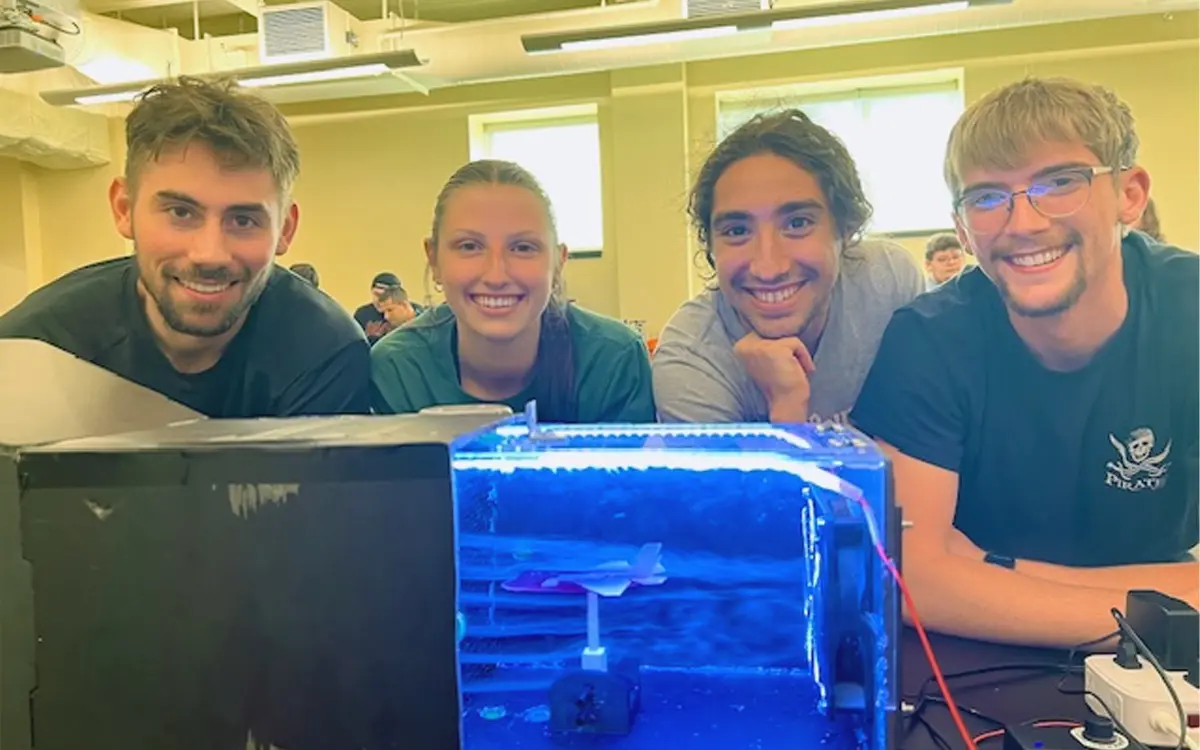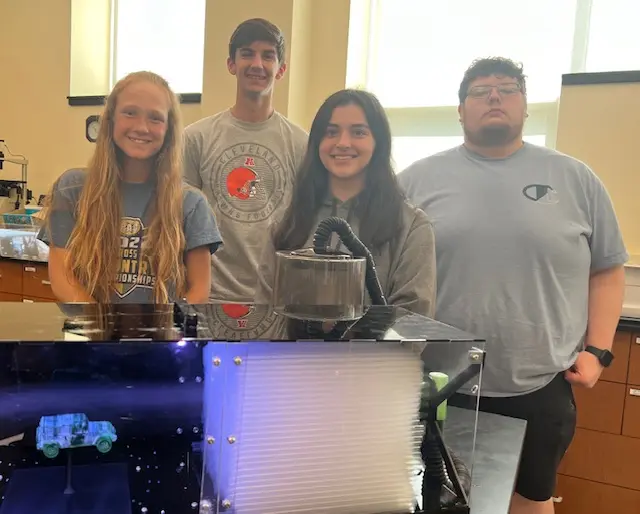LATROBE, PA – The 16 students in Dr. Adam Wood’s Engineering Design and Lab class at Saint Vincent College needed a seemingly hodgepodge of materials to complete their semester-long wind tunnel project. Among the items were a small plastic car and jet plane, a Styrofoam sphere, a handful of plastic drinking straws, a 3D printer, a homemade plexiglass box and dozens of hot glue sticks
What were the most important ingredients? “A lot of research and a lot of teamwork,” said Kristen Prince, a sophomore engineering major from Prince Frederick, MD.
On May 2, the students presented their final designs to Dr. Wood, assistant professor of engineering in the Herbert W. Boyer School of Natural Sciences, Mathematics and Computing. The wind tunnels were graded by Dr. Wood and other engineering faculty.
This was the first time Dr. Wood included the wind tunnel project in his class. The goal was for the students to learn engineering design through iteration. “When approaching an unfamiliar design problem, you can never foresee all the challenges you might encounter until you actually build the thing,” Dr. Wood said.
The students were grouped into four four-person teams. Each team had a $350 budget to build a wind tunnel that could demonstrate airflow around different objects, such as the car, the plane and the sphere. Airflow was made visible via water vapor. “One of our biggest issues was deciding what kind of nozzle would best disperse the vapor,” said Joey Jafarace, a junior engineering major from Conneaut, OH.
Each wind tunnel went through at least three design revisions before completion. The teams gave three oral presentations about what they learned from each of their prototypes and how that drove future design decisions.
Dr. Wood got the idea for the project from one his grad-school roommates who years ago built a wind tunnel for his fluid dynamics class at the University of Illinois. “I thought it was a great design project, so we decided to give it a try,” Dr. Wood said.
There was a significant complication—many of Dr. Wood’s students have not yet taken fluid dynamics, which covers some of the fundamental knowledge relevant to designing a wind tunnel. That forced the students to think on their feet, learn and adapt.
“Over the semester, they became more resourceful and were able to gather the fundamental engineering knowledge required to successfully design a wind tunnel,” Dr. Wood said. “They also became much better at rapidly developing prototypes to test design ideas. Overall, all four groups exceeded my expectations.”
On the final presentation day, the team of Jafarace; Mike Iuzzolino, a junior engineering major from Pittsburgh; Jill Mannarino, a sophomore engineering major from Beaver Falls; and Tyler Horn, a sophomore engineering major from Jeannette, proudly posed with their wind tunnel as Dr. Wood snapped a photo with his phone.
“We learned a lot this semester about a lot of different things,” Mannarino said.
Science wasn’t the only lesson taught. The students gleaned the value of collaboration, too.
“What were our biggest takeaways? We learned Joe is very, very smart. He's good at math,” said Iuzzolino, grinning. “I'm good at gluing things together, Jill is good at doing presentations and Tyler is a great project manager. It was a fun group to work with and we all worked well together.”

(From left) SVC engineering students Mike Iuzzolino, Jill Mannarino, Joey Jafarace and Tyler Horn with their wind tunnel

(From left) SVC engineering students Kristen Prince, Jordan Raynor, Bailey Nicely and Joseph Mace with their wind tunnel